
ماژول شارژر و دشارژر باتری لیتیومی دارای خروجی 5V 2A USB
76,230 تومانعدد
ماژول شارژر و دشارژر باتری لیتیومی دارای خروجی 5V 2A USB مناسب برای ساخت پاور بانک
2 در انبار
معرفی:
ماژول شارژر و دشارژر باتری لیتیومی تنها با اتصال یک منبع ولتاژ 5 ولتی به درگاه میکرو USB ماژول شارژر میتواند باتری متصل به خروجی را با 5V شارژ نماید. از پورت USB نیز می توان به عنوان مصرف کننده استفاده کرد.
این ماژول شارژر انتخاب مناسبی برای ساخت یک پاور بانک میباشد. این ماژول بطور کلی برای منابع تغذیه قابل حمل که از باتری های Lithium 18650 استفاده می کنند مناسب است.
برای استفاده از این ماژول نیاز به فشردن دکمه ی آن ندارید و با اتصال به موبایل به طور خودکار خروجی خواهید داشت. جریان مناسب برای شارژ باتری موبایل به طور خودکار تنظیم می شود.استفاده از این ماژول برای توان کمتر از 0.5 وات و بالاتر از 10.5 مناسب نیست. این ماژول دارای مدار محافظ نمی باشد بنابراین با توجه به ولتاژ 3 تا 4.2 ولتی نباید باتری های چندتایی سری با یکدیگر موازی شوند. باتری مورد استفاده می بایست دارای ظرفیت 4A حدودی برای دشارژ باشد.
مشخصات:
خروجی: حداکثر 5 ولت، 2 آمپر DC
ورودی: 5 ولت و جریان 1 آمپر (میکرو USB)
ابعاد: 16 × 18 × 66 میلی متر
Description:
The Li-ion charger is a voltage-limiting device that has similarities to the lead-acid system. The differences with Li-ion lie in a higher voltage per cell, tighter voltage tolerances and the absence of trickle or float charge at full charge. While lead-acid offers some flexibility in terms of voltage cut off, manufacturers of Li-ion cells are very strict on the correct setting because Li-ion cannot accept overcharge. The so-called miracle charger that promises to prolong battery life and gain extra capacity with pulses and other gimmicks does not exist. Li-ion is a “clean” system and only takes what it can absorb.
Li-ion cannot absorb overcharge. When fully charged, the charge current must be cut off. A continuous trickle charge would cause plating of metallic lithium and compromise safety. To minimize stress, keep the lithium-ion battery at the peak cut-off as short as possible.
A portable device should be turned off during charge. This allows the battery to reach the set voltage threshold and current saturation point unhindered. A parasitic load confuses the charger by depressing the battery voltage and preventing the current in the saturation stage to drop low enough by drawing a leakage current.
When the battery is charging, positively charged lithium ions move from one electrode, called the cathode, to the other, known as the anode, through an electrolyte solution in the battery cell. That causes electrons to concentrate on the anode, at the negative side. When the battery is discharged, the reverse happens.
Li-ion can be designed for a fast charge of 10-minutes. Ultra-fast charging only applies during the first charge phase. The charge current should be lowered after the battery reaches 70 percent state-of-charge (SoC).
Features:
Output:DC 5V / 2A (Maximum)
Input :DC 5V / 1A Android line interface
Size: 66 x 18 x 16mm

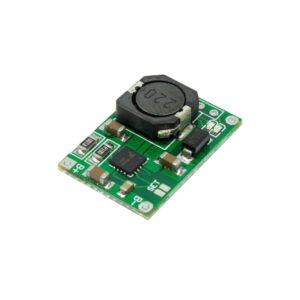
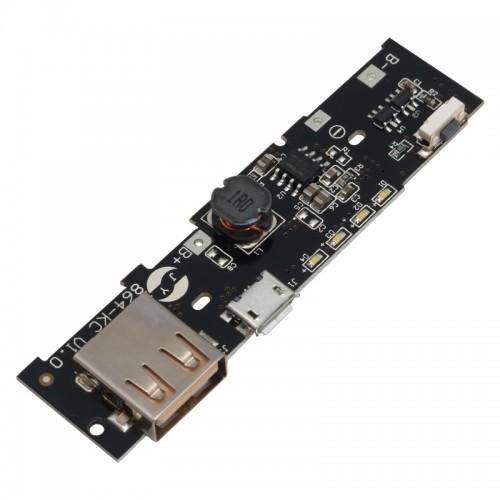
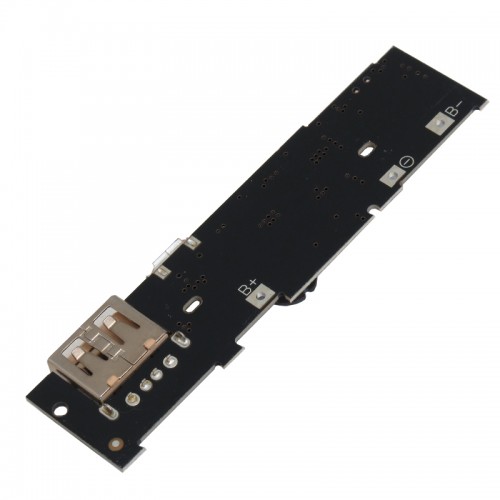
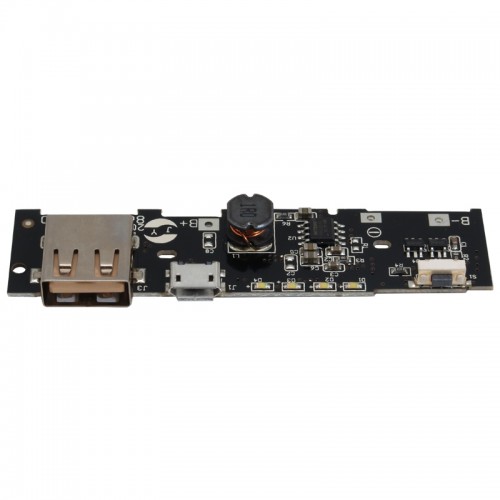
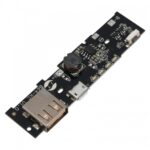

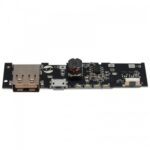
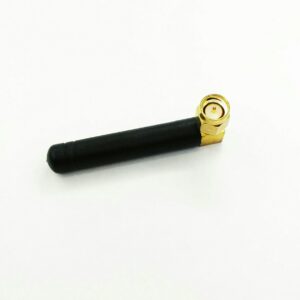
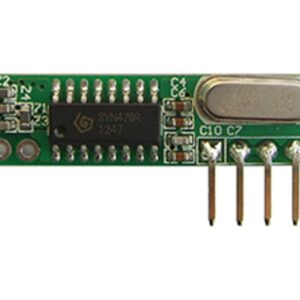

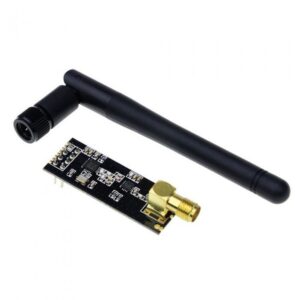

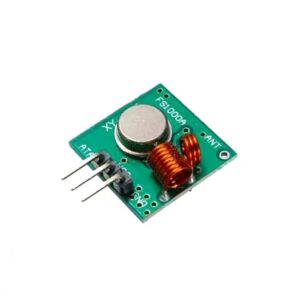
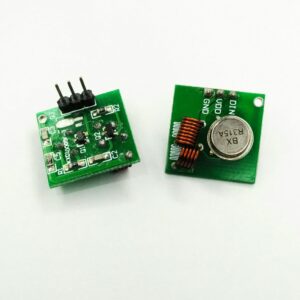
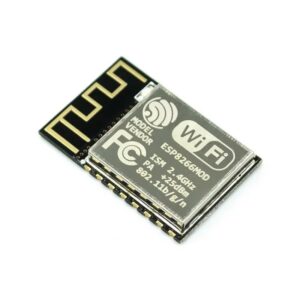
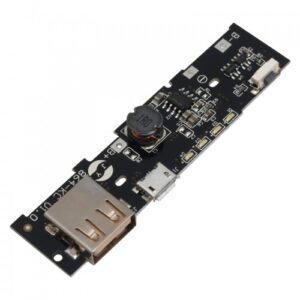
دیدگاهها
هیچ دیدگاهی برای این محصول نوشته نشده است.